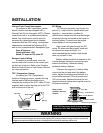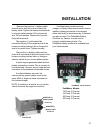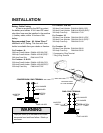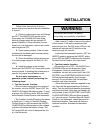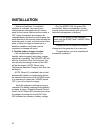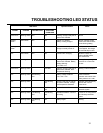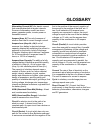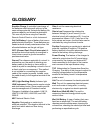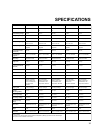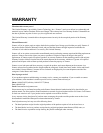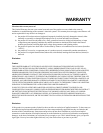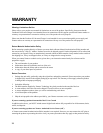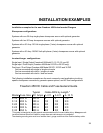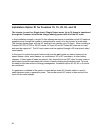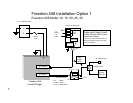
34
Equalize Charge A controlled overcharge of
the batteries which brings all cells up to the
same voltage potential, extends the battery life,
restores capacity and mixes the electrolyte.
This can only be done using the Freedom
Remote Control Panel or a Link Instrument.
Gel Cell Battery A type of battery that uses a
gelled electrolyte solution. These batteries are
sealed and are virtually maintenance free. Not
all sealed batteries are the gel cell type.
GFCI (Ground Fault Circuit Interrupter) A
protective device that rapidly de-energizes a
circuit when current to ground exceeds a
predetermined value.
Ground The reference potential of a circuit. In
automotive use, the result of attaching one
battery cable to the body or frame which is
used as a path for completing a circuit in lieu of
a direct wire from a component. This method
is not suitable for connecting the negative
cable of the inverter to ground. Instead, route
the cable directly to the negative terminal of the
battery.
LED (Light Emitting Diode) Indicator light.
LINK Instrument These panels monitor single
and dual battery banks. Some models provide
remote management of Freedom Inverter/
Chargers. Available in five models: LINK 10,
LINK 20, LINK 1000, LINK 2000, and LINK
2000-R.
NEC National Electric Code
Negative Designating or pertaining to
electrical potential. The negative terminal is the
point from which electrons flow during
discharge.
Ohm A unit for measuring electrical
resistance.
Ohm’s Law Expresses the relationship
between Voltage (V) and Current (I) in an
electrical circuit with resistance (R). It can be
expressed as follows: V=IR. If any two of the
three values are known, the third value can be
calculated by using the above formula.
Positive Designating or pertaining to electrical
potential; opposite of negative. The positive
battery terminal is the point where electrons
return to the battery during discharge.
Power Sharing The feature of the charger to
reduce its output when the AC power being
consumed by the charger and external AC
loads connected to the output of the inverter
are in excess of the input breaker rating.
TSC Abbreviation for Temperature Sensitive
Charging. The ability of the charger to adjust its
charging voltage based on the temperature
sensed at the battery bank if a temperature
probe is used.
Volt The unit of measure for electric potential.
Watt The unit for measuring electrical power,
such as the rate of doing work, in moving
electrons by or against an electric potential.
Watt-Hour (Watt-HR, Wh) The unit for
measuring electrical energy which equals
watts x hours.
Wet Cell Battery A type of battery that uses
liquid as an electrolyte. The wet cell battery
requires periodic maintenance: cleaning the
connections, checking the electrolyte level and
performing an equalization cycle.
GLOSSARY



